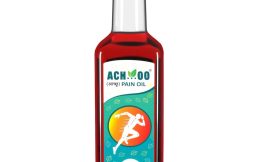Recovering from a major sports injury can be a challenging journey, both physically and mentally. Athletes often face extended downtime and demanding rehabilitation schedules to get back to peak performance levels. However, with the expertise of a sports physiotherapist, the recovery process can be accelerated and optimized. Sports physiotherapists play a critical role in helping injured athletes heal faster, regain strength, and prevent future injuries. This article delves into the science and techniques that sports physiotherapists use to speed up recovery after major sports injuries.
- Understanding Sports Physiotherapy and Its Purpose
Sports physiotherapy is a specialized branch of physiotherapy focused on assessing, treating, and preventing sports-related injuries. Unlike general physiotherapy, sports physiotherapists are trained to understand the physical demands of various sports and tailor recovery programs that suit the athlete’s needs. Their approach is holistic, often involving manual therapy, movement correction, and exercises aimed at promoting quick, safe recovery. The ultimate goal is to get athletes back to their sport, stronger and more resilient than before.
- Assessment and Personalized Treatment Plans
The first step in accelerating recovery is an in-depth assessment of the injury and the athlete’s overall physical condition. Sports physiotherapists evaluate the extent of muscle, joint, or ligament damage, and assess factors like flexibility, strength, balance, and movement patterns. With this information, they create a personalized treatment plan tailored to the athlete’s unique needs and the specific demands of their sport. This personalized approach minimizes time spent on generalized recovery methods, allowing athletes to focus on exercises and therapies that yield the most significant results.
- Reducing Pain and Swelling Through Immediate Care
In the initial stages following an injury, pain and inflammation are common issues that can delay recovery. Sports physiotherapists use targeted techniques, such as ice therapy, ultrasound, and gentle mobilization, to reduce swelling and alleviate pain. By managing inflammation effectively, they help prevent secondary complications and set the stage for faster healing. Pain management techniques not only make the recovery process more comfortable but also allow athletes to begin rehabilitation exercises sooner, thus speeding up recovery.
- Restoring Mobility with Manual Therapy and Stretching
After an injury, athletes often experience restricted movement in the affected area, which can hinder performance and cause muscle imbalances. Sports physiotherapists use hands-on techniques like joint mobilization, soft tissue massage, and stretching to improve flexibility and restore normal range of motion. Manual therapy reduces muscle tension and improves blood flow, promoting faster tissue healing. Improved mobility also allows athletes to perform rehabilitation exercises more effectively, ensuring steady progress and reducing the risk of reinjury.
- Strengthening Muscles and Preventing Muscle Atrophy
Major injuries often lead to muscle weakness, particularly if an athlete is unable to train or use the affected limb for an extended period. A sports physiotherapist introduces strength-building exercises that are safe for the injury and aimed at preventing muscle atrophy (muscle loss). They design specific, progressive workouts that help athletes regain muscle strength while keeping their injury protected. By gradually increasing the intensity of these exercises, physiotherapists ensure that athletes restore their strength in a balanced manner, which is essential for preventing future injuries.
- Enhancing Balance and Coordination for a Complete Recovery
An often-overlooked aspect of injury recovery is the need to rebuild balance and coordination. Sports injuries can disrupt an athlete’s proprioception, which is the body’s sense of movement and position in space. Sports physiotherapists include exercises to improve proprioception, such as balance training on unstable surfaces and coordination drills. These exercises not only accelerate recovery but also reduce the risk of re-injury by helping the athlete regain control and stability.
- Advanced Recovery Techniques in Sports Physiotherapy
Sports physiotherapy has embraced various advanced techniques that speed up healing and restore function:
Dry Needling and Acupuncture: Both methods target muscle knots and tension points, relieving pain and enhancing mobility. This allows for more effective rehabilitation exercises.
Cryotherapy and Heat Therapy: Alternating between cold and heat therapy reduces muscle soreness and increases blood flow to injured areas, promoting faster healing.
Electrotherapy: Techniques like Transcutaneous Electrical Nerve Stimulation (TENS) and Interferential Therapy (IFT) reduce pain and stimulate muscle activity, aiding recovery.
Hydrotherapy: Water-based exercises provide resistance with minimal impact, allowing athletes to regain strength and flexibility while protecting the injury.
- Mental Support and Confidence Building
Recovering from a major sports injury isn’t just about physical healing—it also requires mental resilience. Injuries can be mentally challenging, especially when athletes are eager to return to their sport but must pace their recovery. Sports physiotherapists provide valuable support in helping athletes manage expectations, deal with frustrations, and build confidence in their abilities. This mental coaching is crucial in helping athletes stay motivated and committed to their recovery journey.
- Preventing Future Injuries with Education and Technique Training
A vital part of sports physiotherapy is educating athletes on proper techniques, body mechanics, and ways to avoid future injuries. By analyzing movement patterns and identifying weaknesses, physiotherapists can offer advice on adjustments or precautions to prevent recurrence of the injury. This education empowers athletes to make informed decisions about their bodies and avoid potentially harmful practices that might lead to future setbacks.
- Transitioning Back to Sports with a Gradual Return-to-Play Program
Returning to sports too quickly can result in reinjury. To prevent this, sports physiotherapists develop a gradual, structured return-to-play program that eases the athlete back into training and competition. This program often includes low-impact exercises and controlled training sessions that allow the athlete to build confidence without overstraining the injury site. By following a gradual approach, athletes can return to their sport safely and at an optimal performance level.
Conclusion
Sports physiotherapy is essential for accelerating recovery after major sports injuries. Through personalized treatment plans, targeted exercises, pain management, and advanced recovery techniques, sports physiotherapists empower athletes to heal faster, regain strength, and return to their sport safely. Beyond physical rehabilitation, sports physiotherapy also provides mental support and educates athletes on injury prevention, ensuring they’re prepared to meet the demands of their sport once again. For any athlete recovering from a significant injury, working with a skilled sports physiotherapist can make all the difference in achieving a faster, safer, and more successful return to the game.




